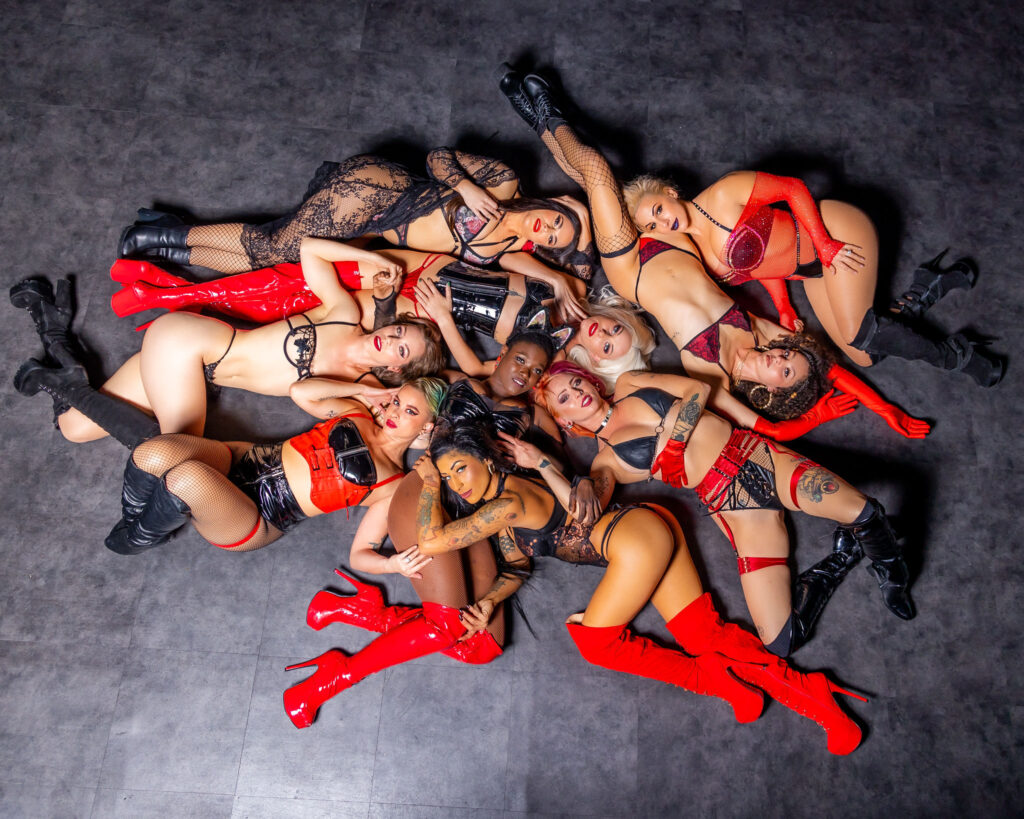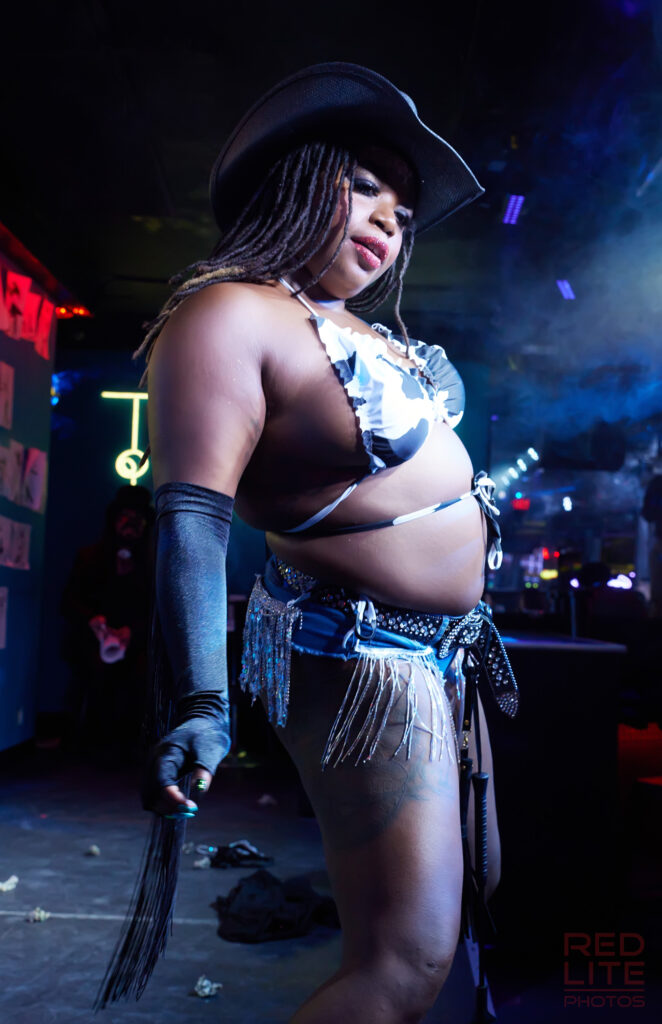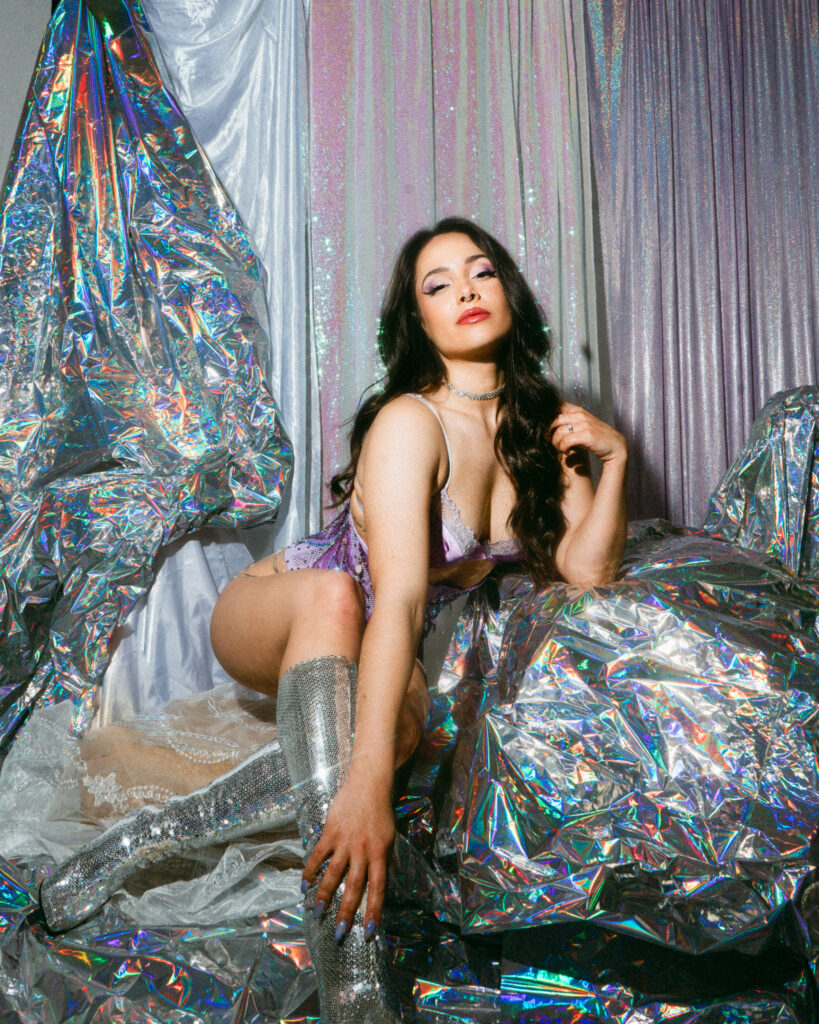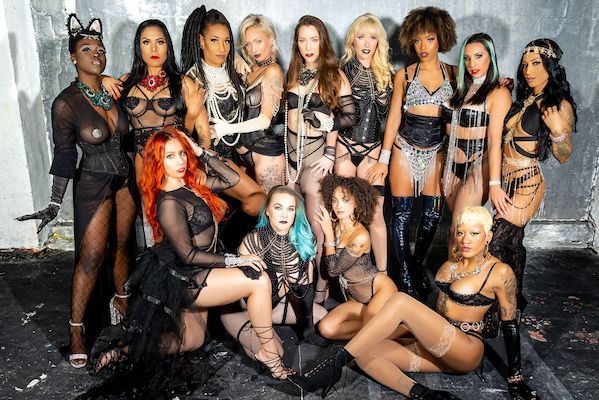Imagine being at a bar, watching a queer woman in an extravagant costume take the stage and begin a slow, seductive dance, removing most of her clothes along the way. With the sapphic burlesque scene that has emerged in the U.S. throughout the last decade, queer women can actually live that experience. To shine a light on this form of burgeoning queer nightlife, Tagg spoke with Ivy Les Vixen, co-founder and producer of Orlando-based troupe Les Vixens; Scarlett Snow, founder of Honey Burlesque, a NY/LA-based LGBTQ women’s burlesque troupe and event production company; and Brooklyn-based burlesque performer and show producer Queerly Femmetastic about the beauty, challenges, and future of sapphic burlesque.

Why Queer Burlesque Rocks
Burlesque blends performance art theatrics with strip show sultriness and vaudeville comedy. Les Vixen and Snow say that at its core, burlesque is a strip tease centered on building tension. Sapphic burlesque retains that element but sheds the male gaze, which underscores mainstream burlesque.
Explaining this, Snow says men seem to engage with burlesque primarily by “staring at [performers’] ass or tits… sexualizing the hell” out of them. She feels men just want to grab, touch, and own the bodies of the performers—but that isn’t the case with queer women.
“A woman can look at you and appreciate what is right in front of them without needing to touch you, without needing to own a piece of you,” says Snow.
Similarly, heteronormative pressures for women to look a certain way evaporate (or lessen) with a queer women-centric audience. For example, Les Vixen and her dancers don’t worry about performing with small boobs, body hair, or while feeling bloated. This body positivity culture also applies to body shape, skin color, and other such diversity.
“[Burlesque shows] tend to hire white, thin, conventionally attractive [dancers],” says Femmetastic. She bucks that trend by co-producing Flossy Follies, a show featuring particularly queer Black performers, with Professor M.
Sapphic burlesque also promotes diversity of female queerness, with representation of the gamut of aesthetics, including high femmes, whose queerness is often questioned because they don’t look like society’s lesbian stereotype; and masculine queer women in the form of drag kings, who are somewhat excluded from mainstream drag.

Barriers to Cultural Conquest
In all of its beauty, the sapphic burlesque scene has developed in spite of major obstacles.
For one, sapphic burlesque performers tend to feel the weight of the fact that U.S. society has always politicized women’s bodies and women taking off their clothes. The recent surge of legislative attacks on women’s rights and drag shows has only exacerbated that sentiment.
“Anybody who’s saying burlesque is not political is lying,” says Femmetastic. “If they’re willing to come for the drag girlies, they’re gonna come for us, too.”
Meanwhile, pitching sapphic entertainment to bars and other venues is often difficult, partly because systemically, men—straight or otherwise—are more catered to as consumers. Case in point: nationwide, there are only 30 bars billed as lesbian-specific; Orlando has a myriad of gay bars but zero lesbian bars; and in a Time Out list of the 30 best gay bars in NYC, less than a third of those included are lesbian bars.
Scarlett Snow notes there’s a perception that gay men’s nightlife earns more profits than queer women’s nightlife. However, to any extent that’s true, Snow points to cultural explanations that could be rectified: Women make less, so they have less spending power. Whether it’s budget- or interest-related, women might drink less than men. Not only that, but queer women may want more from a night out than drinking and watching a performance. To address such circumstances, bars could offer mocktails or food, and events could incorporate some hands-on activities into their agendas.
Then there are promotion issues. Recently, a venue failed to properly promote one of Femmetastic’s shows (The Blackest Berry) before canceling it last-minute, due to low ticket sales. Additionally, Les Vixen says social media algorithms often flag promotion posts with girls dancing, touching each other, or showing their cleavage or butt cheek area as inappropriate—even if there’s no real nudity or anything close to it. She says such undue censorship has stymied various women-centered entertainment troupes.
Nevertheless, Les Vixen, Snow, and Femmetastic continue to produce and perform, remaining hopeful for the future.

How the Show Will/Should Go On
Femmetastic hopes that soon, lesbian bars, such as New York’s Cubbyhole and Henrietta’s, will more intently include sapphic burlesque in their efforts to serve queer women. Scarlett Snow suggests one key to growth might be increased collaboration between sapphic burlesque and other entertainment groups.
“[Collaboration is] just a good way to strengthen the community,” says Snow.
Certainly, strength is essential for a community—and a nightlife—which has already endured much tragedy. For example, last year, there were multiple attacks on gay men and gay bars in New York City, and Les Vixen’s own turf, Orlando, suffered the horrific Pulse nightclub shooting in 2016. Considering this history, Les Vixen hopes that not only will the sapphic burlesque scene grow, but that it will retain its deeper mission of creating spaces that foster positive change for the queer community.
“It’s never just been about entertainment,” says Les Vixen. “[We don’t do it] for the rhinestones, it’s not for the glamour…it’s ‘let’s shake our ass for a purpose!’”

